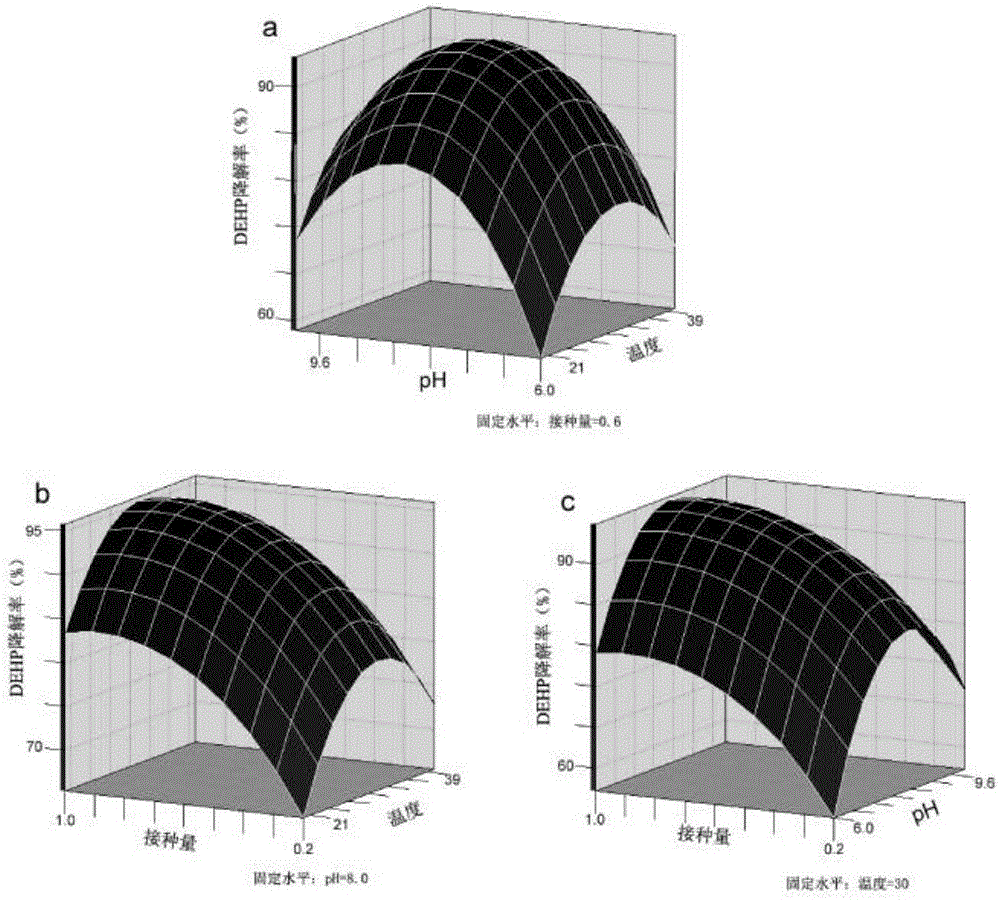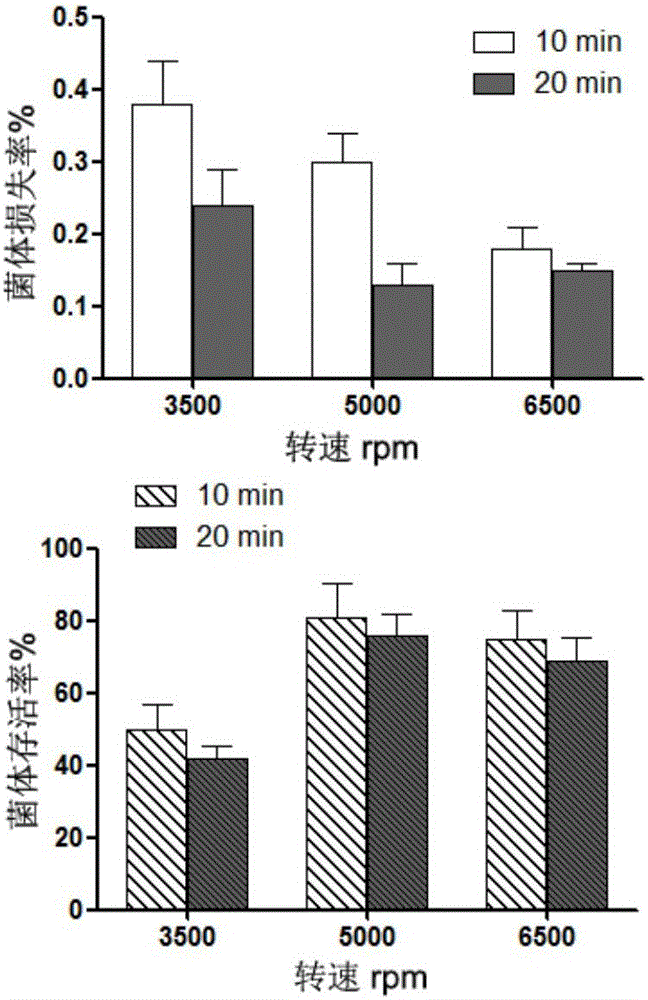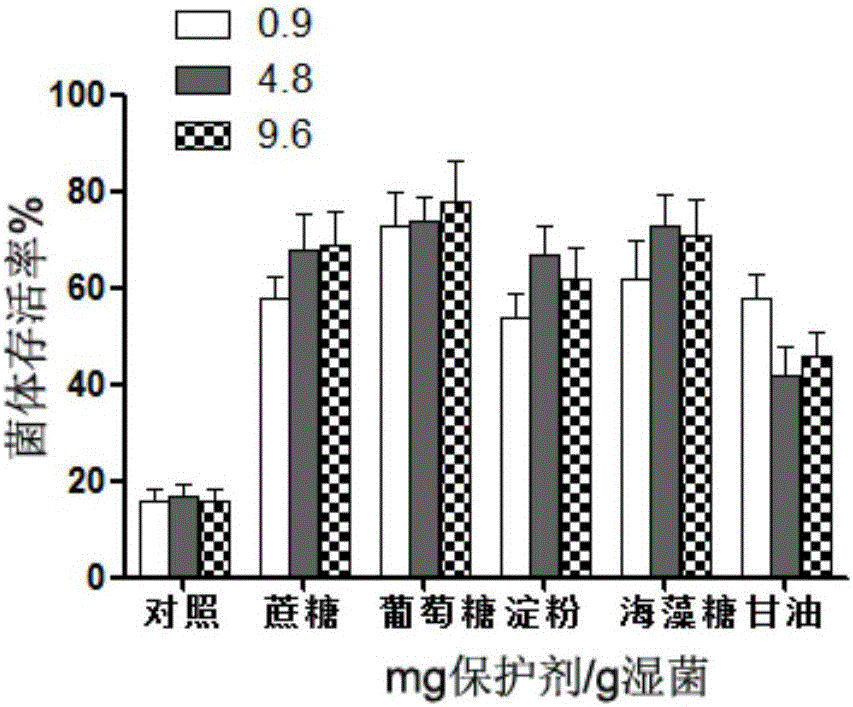Method for repairing DEHP contaminated soil and lowering DEHP content in growing vegetables with Microbacterium sp.J-1
A technology for polluting soil and vegetables, applied in the field of biological treatment of environmental pollutants, can solve problems such as rarely polluting farmland soil
- Summary
- Abstract
- Description
- Claims
- Application Information
AI Technical Summary
Problems solved by technology
Method used
Image
Examples
Embodiment 1
[0031] The optimization of fermentation conditions of Microbacterium sp.J-1 degrading bacteria and the preparation of freeze-dried bacterial agent, the specific method is as follows:
[0032] 1. Optimization of fermentation conditions: Culture the strains stored at 4°C on a slant and activate at 30°C for 24 hours. Use 10mL of sterile water to make the activated bacterial strain into a bacterial suspension, and the OD 600 The inoculum size of =1.0 was placed in the seed liquid medium, and cultured with constant temperature shaking at 30°C and 180rpm for 24h; 600 =1.0 inoculum size, put the seed solution into the shake flask liquid fermentation medium (containing 200mg / LDEHP), cultivate it at 30°C and 180rpm, and take a sample every 24h, the initial pH of the strain activation condition (6~10) , temperature (20-40°C), and inoculum size (0.2-1.0) were optimized by response surface surface (RSM). The Box-Behnken experimental design was adopted, and three levels of high, medium a...
Embodiment 2
[0056] Experiment on the effect of Microbacterium sp.J-1 bacterial agent on the degradation effect of DEHP in polluted soil and the content of DEHP in planted Chinese cabbage
[0057] 1. Preparation of test soil and selection of vegetables for planting: the soil is paddy soil from the farm of South China Agricultural University, passed through a 60-mesh sieve after air-drying, and the pH is 6.7. Add DEHP to it to reach 50mg / kg, and add double distilled water to adjust to the field water holding capacity (about 30%), avoid light aging for 15 days. Our previous research showed that Brassica parachinensis L. variety Huaguanyouqing has the characteristics of high accumulation of DEHP, which poses a serious threat to food safety and human health.
[0058] 2. Experimental treatment: four treatments were set up: blank contaminated soil (CK), inoculated contaminated soil (inoculation strain), planted Chinese cabbage contaminated soil (planted Chinese cabbage), and simultaneously inocu...
Embodiment 3
[0066] A method for repairing DEHP-contaminated soil while reducing DEHP content in vegetables grown in contaminated soil, comprising the steps of:
[0067] (1) Activate the Microbacterium sp.J-1 strain and carry out fermentation culture. The fermentation temperature is 30°C, the pH is 8.0, and the inoculum size is OD 600 =0.7;
[0068](2) The fermented liquid obtained in step (1) is centrifuged at a rotating speed of 5000rpm for 10min, and the thallus is collected. According to the addition of 6mg glucose / g thallus, glucose is added to the thalline and then put into a low-temperature freezer for pre-freezing. After freezing completely and forming small ice crystals, put the pre-frozen bacterial liquid into a vacuum freeze dryer with a cold trap temperature of -30°C for 24 hours, and collect the freeze-dried bacterial cells.
[0069] (3) After planting Chinese cabbage in DEHP-contaminated soil, inoculate the freeze-dried bacterial agent around the root system of Chinese cabba...
PUM
 Login to View More
Login to View More Abstract
Description
Claims
Application Information
 Login to View More
Login to View More - R&D
- Intellectual Property
- Life Sciences
- Materials
- Tech Scout
- Unparalleled Data Quality
- Higher Quality Content
- 60% Fewer Hallucinations
Browse by: Latest US Patents, China's latest patents, Technical Efficacy Thesaurus, Application Domain, Technology Topic, Popular Technical Reports.
© 2025 PatSnap. All rights reserved.Legal|Privacy policy|Modern Slavery Act Transparency Statement|Sitemap|About US| Contact US: help@patsnap.com



